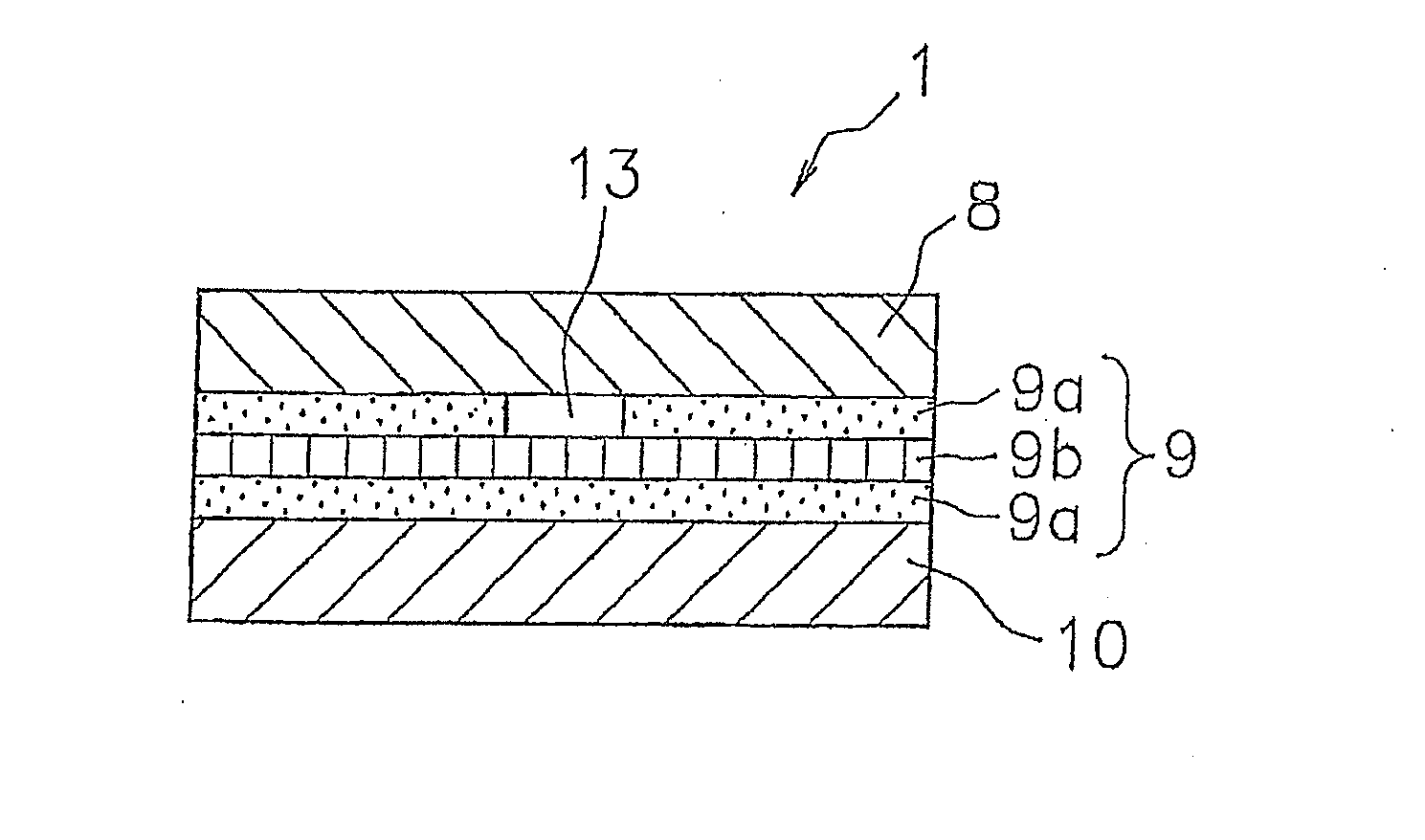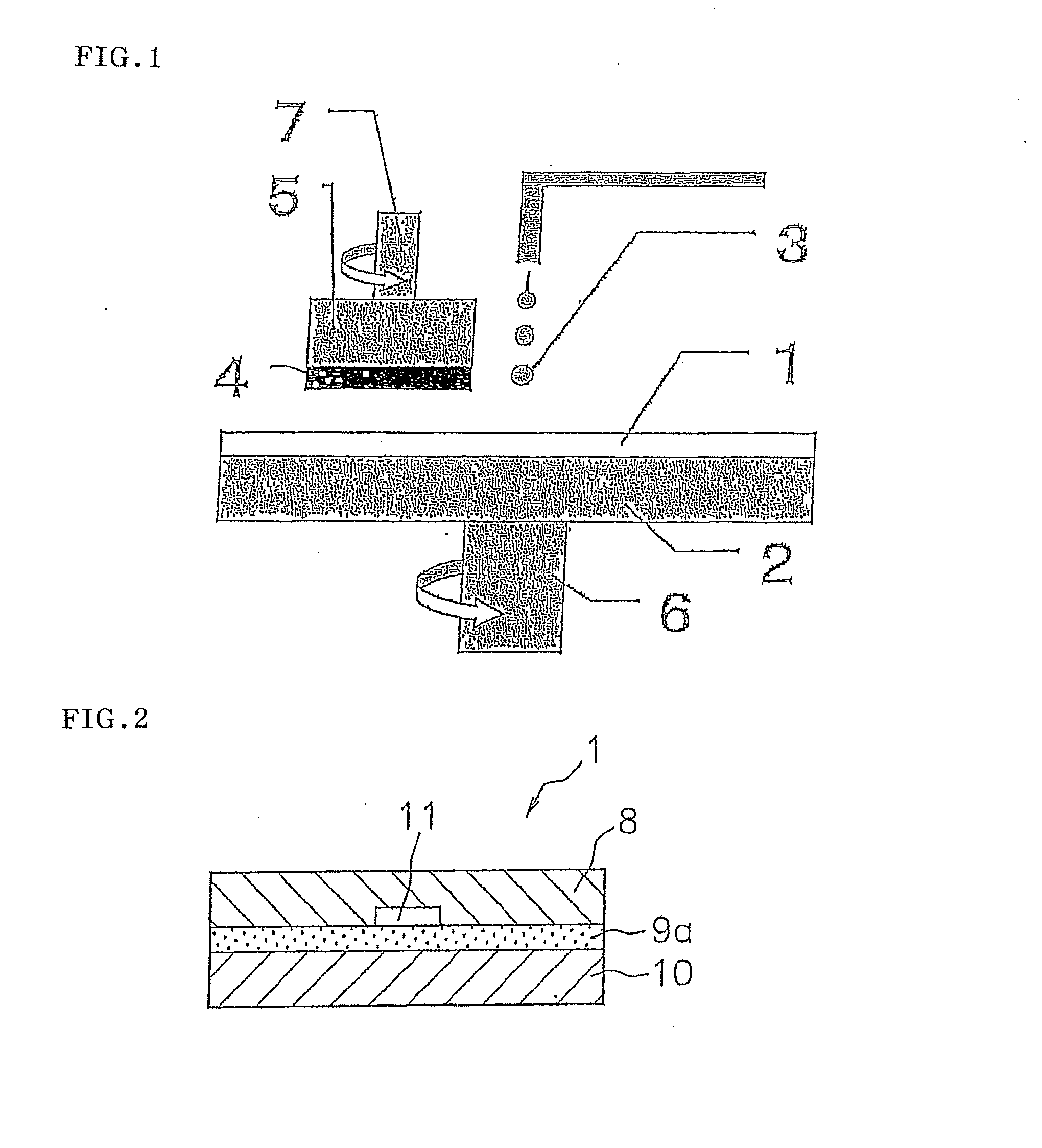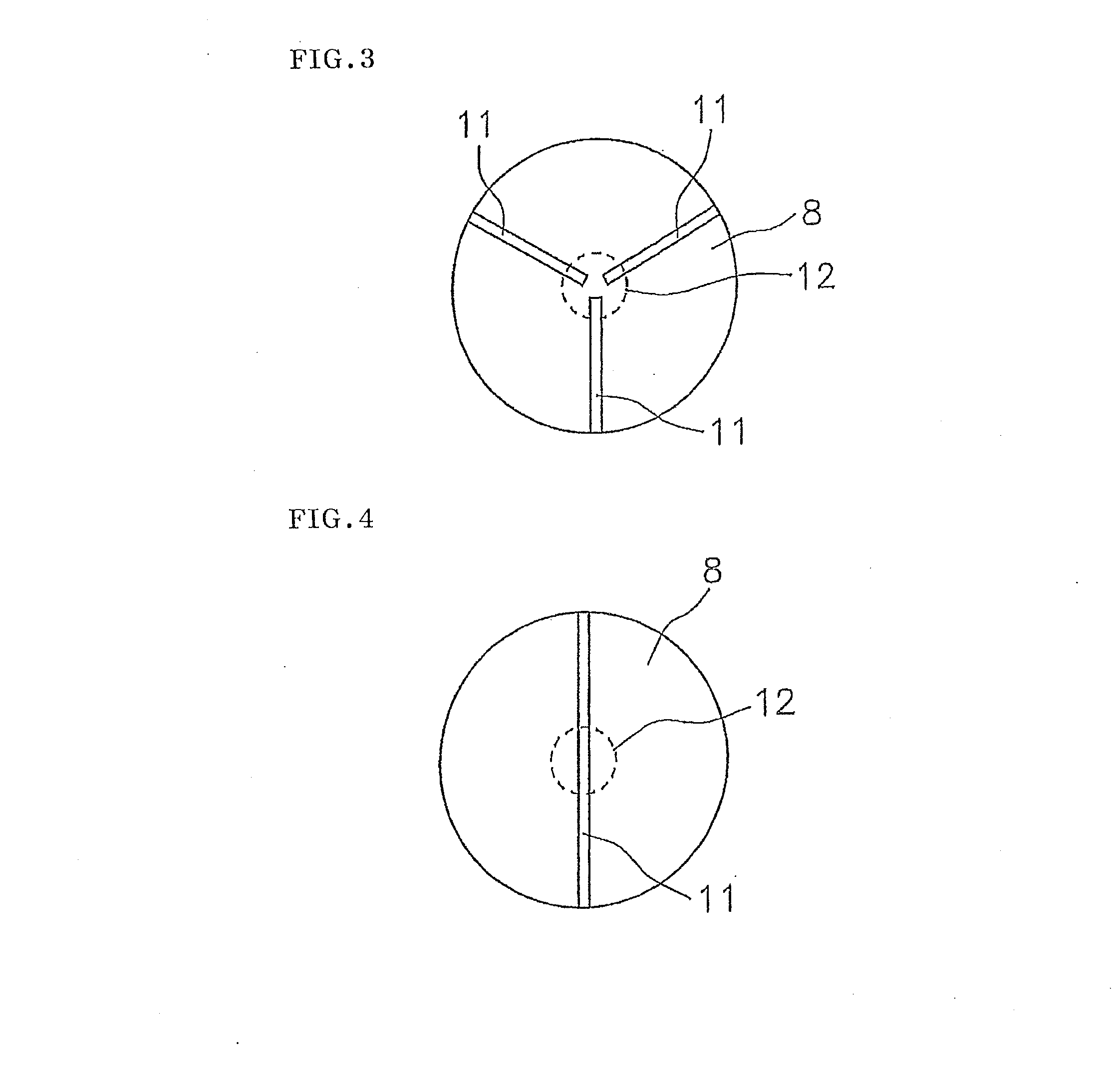Laminate polishing pad
a polishing pad and laminate technology, applied in the field of laminate polishing pads, can solve the problems of peeling or displacement more likely to occur between the layers during polishing, peeling or displacement more likely to occur between the cushion layer and the polishing layer without through holes, and achieve the effect of effectively preventing peeling or gas blistering
- Summary
- Abstract
- Description
- Claims
- Application Information
AI Technical Summary
Benefits of technology
Problems solved by technology
Method used
Image
Examples
production example 1
Production of Polishing Layer
[0118]To a polymerization vessel were added 100 parts by weight of an isocyanate-terminated prepolymer (ADIPRENE L-325, manufactured by Chemtura Corporation) and 3 parts by weight of a silicone surfactant (SH-192, manufactured by Dow Corning Toray Silicone Co., Ltd.) and mixed. The mixture was adjusted to 80° C. and degassed under reduced pressure. Subsequently, the mixture was vigorously stirred with a stirring blade at a number of revolutions of 900 rpm for about 4 minutes in such a manner that air bubbles were incorporated into the reaction system. To the resulting mixture was added 26 parts by weight of 4,4′-methylenebis (o-chloroaniline) (IHARACUAMINE-MT, manufactured by IHARA CHEMICAL INDUSTRY CO., LTD.), which had been previously melted at 120°. The liquid mixture was stirred for about 1 minute and then poured into a loaf-shaped open mold (casting vessel). At the point when the liquid mixture lost its fluidity, it was placed in an oven, and subjec...
example 1
[0120]Using a grooving machine (manufactured by Techno Corporation), grooves with a width of 1.0 mm and a depth of 0.1 mm were radially formed as the non-adhering region X on the back surface of the polishing layer, which was prepared in Production Example 1, at angle intervals of 45° from the center to the peripheral end. The total surface area of the non-adhering region X was 0.84% of the surface area of the polishing layer. Subsequently, a 60-cm diameter double-sided adhesive tape (base film: a 25-μm thick PET film, adhesive layers: 50-μm thick acrylic adhesive layers) was bonded to the back surface of the polishing layer using a laminating machine. A 60-cm diameter cushion layer (a polyurethane foam with a thickness of 0.8 mm) was then bonded to the other side of the double-sided adhesive tape, so that a laminate polishing pad was obtained.
example 2
[0121]Using a grooving machine (manufactured by Techno Corporation), grooves with a width of 1.0 mm and a depth of 0.1 mm were radially formed as the non-adhering region X on the back surface of the polishing layer, which was prepared in Production Example 1, at angle intervals of 45° from the center to the peripheral end. In addition, a concentric groove with a width of 0.25 mm and a depth of 0.1 mm was formed as the non-adhering region X at a position 100 mm apart from the center in the radial direction. The total surface area of the non-adhering region X was 0.91% of the surface area of the polishing layer. Subsequently, a laminate polishing pad was prepared by the same method as in Example 1.
PUM
| Property | Measurement | Unit |
|---|---|---|
| Fraction | aaaaa | aaaaa |
| Lattice constant | aaaaa | aaaaa |
| Surface area | aaaaa | aaaaa |
Abstract
Description
Claims
Application Information
 Login to View More
Login to View More - R&D
- Intellectual Property
- Life Sciences
- Materials
- Tech Scout
- Unparalleled Data Quality
- Higher Quality Content
- 60% Fewer Hallucinations
Browse by: Latest US Patents, China's latest patents, Technical Efficacy Thesaurus, Application Domain, Technology Topic, Popular Technical Reports.
© 2025 PatSnap. All rights reserved.Legal|Privacy policy|Modern Slavery Act Transparency Statement|Sitemap|About US| Contact US: help@patsnap.com



